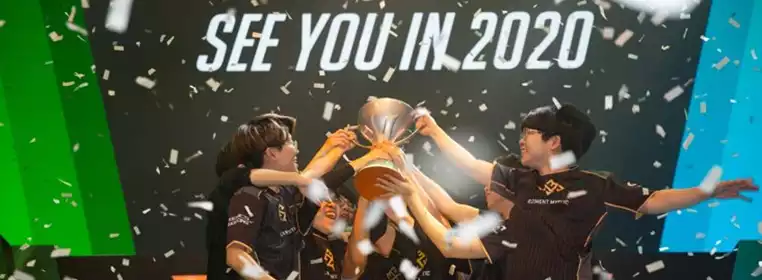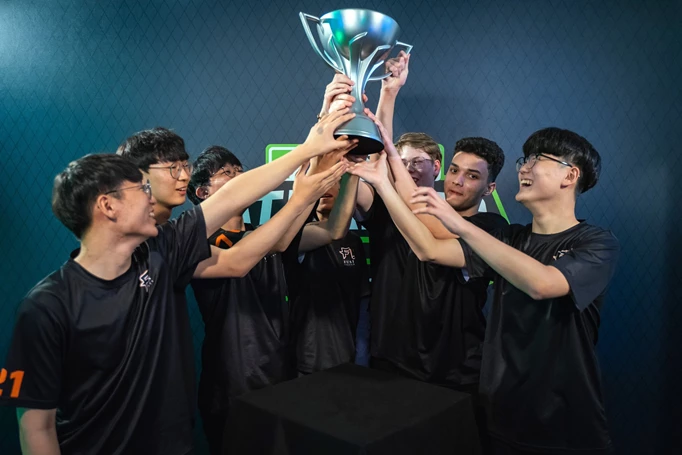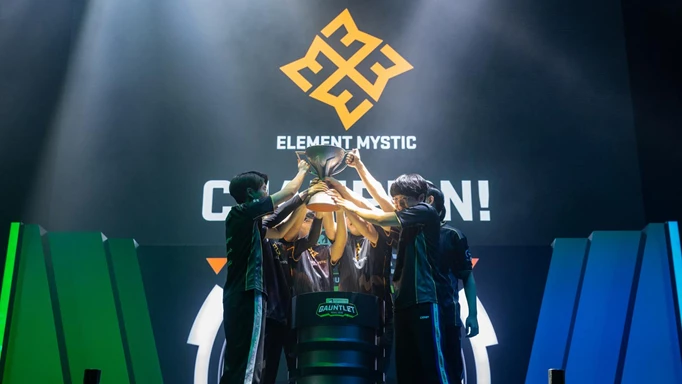Dave “Bench” Cecconi on the accusations of lazy scouting, buyouts and community perception

An eventful offseason lays mostly behind us. Going by official team announcements, currently 31 Overwatch League players have been traded to other franchises and 41 contenders walked the path to pro into the highest tier of competitive Overwatch. While a couple of announcements are still expected until the start of the season in February and one or the other fan favorite might still find a home, news about promising players not making it in have hit social media. Dozens of twitlongers told heartfelt stories of determination, despair and even retirement.
In a league that only offers 240 theoretical positions and has thousands of players pursuing them, it is to be expected that many-a-dream will be shattered every transfer season. For edge case players who have displayed a promising amount of potential and have Contenders accolades to show for it, the annual denial of an Overwatch League contract offer hits differently. With good intentions and out of anger and empathy, the community looks for culprits and potential solutions.
One who is intimately familiar with this topic is SEG esports’ Dave “Bench” Cecconi. As an agent he represents a significant number of players and staff that have made the Overwatch League this season as well as some who have failed to. In this interview, he shares his insights on the scouting process, the nature of buyouts and potential improvements to the offseason cycle.
In your opinion and experience, what have been the biggest obstacles this offseason in terms of getting contenders players signed to OWL teams?
I’d say it’s a combination of several things: poor planning from OWL’s end in terms of the league schedule, lack of helpful scouting tools, and buyouts. The first part is pretty complex and while a lot of the community wants to criticize teams for bad scouting, I’d say that teams would be a lot better if they actually had time for it (and please don’t suggest teams hire dedicated scouting teams—the infrastructure and budgets don’t justify extra staff for this).
Keep in mind that this 2020 offseason started the very next day after Grand Finals. There was very little time for coaches to put an offseason plan together and do any type of in-depth scouting. Trials end up being essentially all the staff has to go by for rating players—especially in these massive open trials where 300 or 400 players apply. I think once you narrow down the player pool and move into later phases of the trial, there is an opportunity to go back and comb through individual VODs.
And I think Flame recently (and correctly) pointed this out: Contenders match footage is useless to OWL teams. Coaches (rightfully) want player POVs with access to comms and not just an overhead spec with killfeed. That Contenders VOD is not helping a coach properly scout a Lucio player. Sure, you can see their playstyle or determine their mechanical skill to a degree, but do they ult track well? What is their field of view like? How do they call rotations and engages? Are they responsible for tracking and calling key cooldowns, win conditions, etc.? Notice how for the most part none of these things can be deduced from a straightforward match VOD.
Do you think having a buyout has put players at a disadvantage?
Buyouts are a really complex topic too. Buyouts impacted some players’ chances of getting into OWL this offseason, 100%. But I also don’t necessarily want that to come off as “Contenders’ teams demanded an unfair asking price.” Contrary to popular belief, many of the orgs are run by human beings who also don’t want to restrict their players’ careers. I just had an academy team agree to release a very talented player for no buyout to OWL because they could sense that any type of pushback would result in the deal falling through. Now, this isn’t always the case, and more importantly I don’t think it should be. But it’s important that the community doesn’t begin parroting the idea that academy teams are unfairly restrictive. I don’t believe that to be the case at all.
Several teams have done well to either transfer players to other teams for worthwhile buyouts. Some have utilized their academy program to kickstart player development in a way which allows them to transition seamlessly into the team culture of their OWL parent. The latter may not make the financial bottom line more impressive but there’s undeniable value there.
However, many other teams have failed to find a way to fully integrate an academy program into their organizational model. Now, these teams don’t feel it makes sense to farm talent for the rest of the league, albeit to do so on their own dime.
Buyouts are tricky to talk about because I don’t want to share too much about my own strategies in negotiations and how I approach buyouts with teams. It’s very different from player to player. In general, I believe they are fine for the absolute top players because teams have proven they are willing to pay in excess for the best talent. Every now and then you run into a situation where buyouts hurt player earning power in OWL because a Contenders team who has the player under contract can ask for up to 100% of the salary as buyout. Most OWL teams have separate budget allocations for roster salary and buyouts which is helpful.
I think the most common situation where buyouts hurt players (not saying it happens frequently, because it doesn’t) is when an OWL team is looking to build out a bench. Most of a team’s salary allocation is going to be distributed across its top players. Teams are more justified to even spend on players who don’t necessarily “start” but feature in a large number of maps. For players with increasingly specialized and niche roles, however, buyouts are counterproductive. The OWL team will often select a second or third choice from an unsigned team if the alternative is paying a steep buyout for their first choice. This is why you’ll often see players who are believed to be fringe OWL-level left out: even though they are a more attractive option in terms of ability, you’d ultimately pay two times as much for them to fill a smaller role in OWL.
Overall, I don’t think buyouts have been a large-scale issue from the perspective of being too restrictive for players.

 Click to enlarge
Click to enlargeThe community has accused OWL teams of lazy scouting, to what extent did you think that held true?
This is impossible to answer in short because there are so many layers to this and I’ll get in trouble with someone if I don’t add some nuance here. I very much agree with the community regarding many of the players who were unfairly overlooked this offseason. I’m not going to name names or teams because I probably rep a good portion of the best Tier-2 players at this point.
This offseason was disappointing for many of my guys who felt like they had great performances and grew individually over the last 2 Contenders seasons. A number of players felt like they were being rated for the first time in large trials environments where coaches don’t always have a prior working knowledge about the players involved. For several reasons, it can be difficult to stand out in larger trials when given limited blocks. In small scale scenarios like trialing 2 or 3 players for a role, it gives coaches a good opportunity for seeing how new candidates fit into their team’s playstyle since they are filling in on a pre-existing roster with synergy. The coaches can then focus on that lone role. But as the scope of trials expand, it’s easier and easier for good players to fall through the cracks. Many players feel that 99% of what they accomplish during a competitive season is overlooked in favor of a trials environment in which it’s statistically less likely they will be rated properly.
And again, I don’t mean to suggest that teams are always at fault here. Keep in mind that rushed trials were very much the result of an unfavorable schedule and not always the fault of the teams. There are plenty of teams, in my opinion, who do a great job of identifying talent within the league and through trials. Trials are extremely helpful and a necessary supplementary tool. It just would have been nice if teams had more time this offseason to regularly consider other competitive performances from players. Personally, I believe that the best way to scout a player is to consider his performances over a period of time and to supplement those with trials where you can get a feel for other necessary skills that aren’t immediately obvious in a match VOD.
Atlanta and Boston do a good job at the academy level as well. I think the Atlanta staff is really good with using their academy team to select and develop talent (like Hawk, Sugar, etc.) but also in identifying talent from their Contenders competition in-season and using that to inform offseason player signings. Likewise, Boston has been very successful in both identifying and developing talent for promotion into OWL. They also are putting stock in bringing on coaches to OWL who have recent experience working with the players in Contenders. In my opinion, signing a coach straight from Contenders gives the new OWL team a great advantage in scouting Tier-2.
In addition, the community needs to be kept in check and I think that’s largely what this prompt is speaking to. A large portion of the social communities in competitive OW are naïve and too easily buy-in to bad intel or unsubstantiated speculation. It’s really frustrating seeing the approval ratings of players tank in the offseason because individuals who aren’t in a position to accurately comment on their situation do so regardless.
Speaking of, when it comes to forums and socials, most of the angry mob is just noise. We all see the viewership numbers: There are 100 viewers each week for Contenders and yet 10,000 Redditors seem to believe they are in a better position to identify talent and recommend it than the coaches themselves.
Every day you see “How is it possible X player or Y player isn’t in OWL yet? These teams are morons! He’s actually insane. His aim is actually nutty—I know this because I have his 3-month sub badge.” Without fail, the conversation devolves into criticizing OWL teams’ scouting abilities. But what the community doesn’t realize is how little information and few tools they themselves have for fully assessing players, or what really goes into the roster decisions in some cases.
For instance, keep in mind that chemistry is a really big factor in team building and roster construction. Teams will often spread players around in different blocks and get them to play with different teammates to assess whether they work particularly well with specific players. Also, sheer mechanics are almost always the first thing (and only thing) the community identifies in a player. In reality, mechanics can be difficult to judge in trials for certain players because of ping-related issues. Coaches of course take note of raw ability and aim, but positioning, movement, awareness, communication, decision-making, perceived room for further development—many of these attributes and skills are not easily identifiable outside of a trials environment or without access to player POV VODs.
This is obviously all predicated on how well teams can organize and run a trials environment. Like I said earlier: not every OWL trial is created equal. Some teams do a great job. A smaller handful of others? Probably not so much. Regardless, and even in scenarios where the trials setups are less than ideal, teams are still working with infinitely more information than the community realizes when it comes to decision making.
There are also coaches in this league who have experience working with many of the players in Overwatch League and Contenders previously and don’t require weeks upon weeks of trial blocks to familiarize themselves with the available player options. You have to take each team on a case-by-case basis and rate methods individually.
And yes, of course, there are a handful of teams who are completely inept when it comes to scouting and roster construction. At the same time, calling out the whole league and league scouting in general is such a bad look because it almost always comes from individuals who are the least informed about how it all works and what factors outside of “nutty aim” teams consider.

 Click to enlarge
Click to enlargeWhat do you think are the most important changes that the League could implement to help contenders players walk the path to pro?
First, something unrelated to this question. Something the league can do to improve the offseason in general: OWL 100% needs to alter its approach to offseason scheduling—especially as it pertains to team options. The league had its head in the right place by trying to incentivize teams to make fast decisions regarding team options following the 2019 grand finals. I’m sure they intended for it to go a lot differently and were obviously looking out for soon-to-be free agents when they workshopped this approach.
But what ended up happening is teams with the majority of their contracts in place and who only needed to fill one or two roles were in fact incentivized to hold onto players with options until they were 100% certain they could upgrade. Also, you can’t blame the team for operating within league rules. I know there was a situation that was publicized recently regarding this point. You should feel for the player. But not every situation requires pitchforks. No one did anything wrong in my opinion, and the criticism of the team in question and the individuals involved is misplaced.
In traditional sports, teams are not incentivized to make decisions about team options. Rather, they are mandated to do it by a certain date and before the rest of the league is able to pursue free agent targets. To implement an offseason schedule where ALL players have the best opportunity of finding a position and one team is not at an inherent advantage over another, the league should mandate teams exercise/decline and announce publicly all available options within 1-2 weeks following the previous season, and follow that with a moratorium of another week so that teams have an opportunity to survey available talent and create a strategy for approaching its offseason. Follow the moratorium with open free agency where teams can sign new players. What’s key here: If the market of the league doesn’t allow teams an opportunity to scout Contenders in-season, then at least create a level playing field following the season for teams to play catch-up should they choose. This proposed schedule would guarantee that all players who are declined their option year and become free agents receive just as much of an opportunity as other players.
Specifically, regarding Contenders and the Path-to-Pro: I think reputable names have already made good suggestions. Lighten up on sponsorship and tournament restrictions, make available internal scouting tools and in-game player POVs that players can provide to OWL teams, etc. This is a really complex question otherwise and I think you need the combined perspective from the league office, OWL teams, Contenders teams, and the players. It’s not as simple as fixing or improving one little thing.
Images courtesy of Blizzard Entertainment